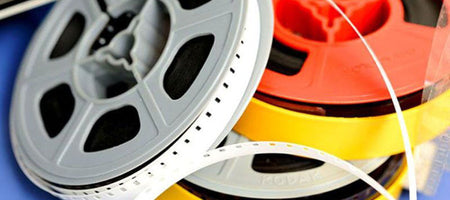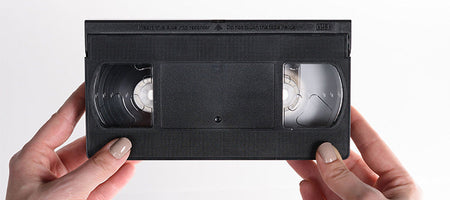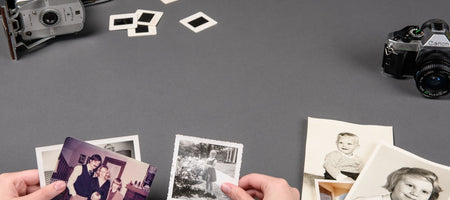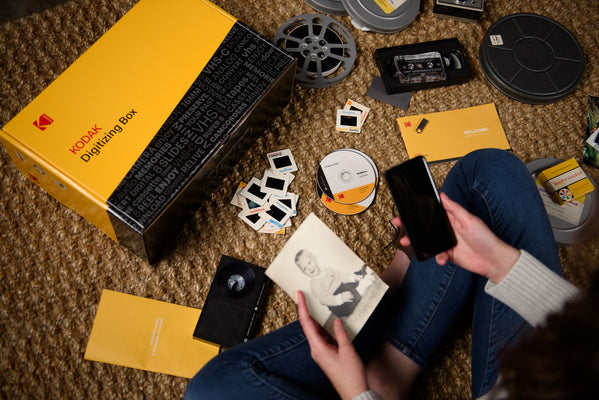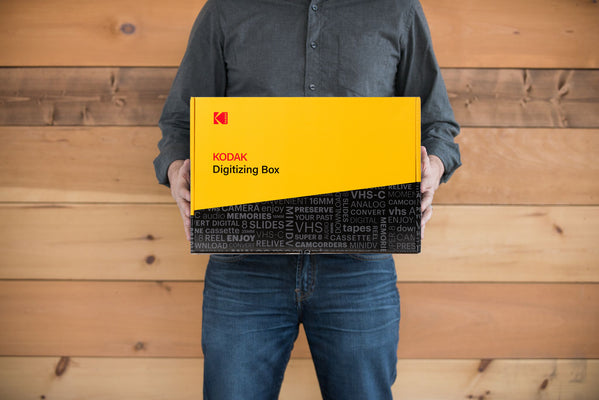When you hear 8mm you may think of film reels, but there are 8mm video cassette formats, too. By the 1980s, the videocassette tape was by far the preferred method of video recording by the amateur consumer market. VHS and Betamax were the most popular forms of analog home movie recording at the time, with families everywhere buying camcorders and VCRs to save beautiful memories on video.
While these two videotape formats were doing extraordinarily well, there was one major problem with their design that needed to be improved upon - their sizes.
VHS and Betamax camcorders were absolutely massive due to the need to accommodate large tapes inside the camcorders. These camcorders often weighed a lot, and when perched atop an ‘80s dad’s shoulder, they couldn’t look sillier. People were forced to lug around these awkward machines to all their important family events just to get a decent recording. That’s when the 8mm video cassette formats rolled in.
The 8mm video format was introduced by Eastman Kodak in 1984 as a smaller alternative to the larger VHS and Betamax formats. The “8mm” refers to the size of the tape, which is 8mm in width compared to the 12mm width of Betamax tape. This may not seem like a significant size decrease, but the 4mm difference made producing the much smaller Sony Handycam camcorder in 1985 possible. These size cuts made camcorders accessible and transportable, and the popularity of camcorders grew even more with these improvements. Of the 8mm tape formats, three models were produced. The first one produced was called Video8 and was completely analog in all its functions. The introduction of Video8 was received well by consumers, and so the second model, Hi8, was born.
All About the Hi8 Tape Format
The Hi8 tape format was the second model of the three 8mm video cassette formats to be released and was almost entirely analog, like its predecessor the Video8, except for some digital sound recording capabilities. Hi8 tapes had a similar design to previous tape formats - a length of 8mm-wide magnetic tape wound around two spools enclosed in a hard cassette shell to keep the sensitive tape protected. In many ways, the Hi8 format is like a miniaturized Betamax tape with higher resolution.
The Hi8 tape format was produced by Sony in competition with JVC’s Super-VHS (or S-VHS). Both formats sported increased recorded bandwidth of the luminance signal, allowing for higher-resolution video recording. The two formats were comparable in many ways, but the Super-VHS had much longer recording capabilities.
Hi8 tapes (as well as both Video8 and Digital8 8mm tape formats) have recording lengths of 180 minutes for PAL in short play mode and 120 minutes for NTSC in short play mode. Two plus hours for recording is not bad, but some consumers still preferred the VHS and Betamax formats for the lengthened recording time.
In the end, the Hi8 tape was outdone by newer and better digital video recording formats. Most consumers today aren’t using Hi8 tapes, but many people still have old tapes from the ‘80s and ‘90s with precious family footage on them. If you have any Hi8 tapes in storage or any analog media for that matter, it’s time to get them digitized with KODAK. While the Hi8 tape format was a great advancement for tape recording, it’s time to bring your own Hi8 tapes into the digital world so you can relive special memories for years to come.

